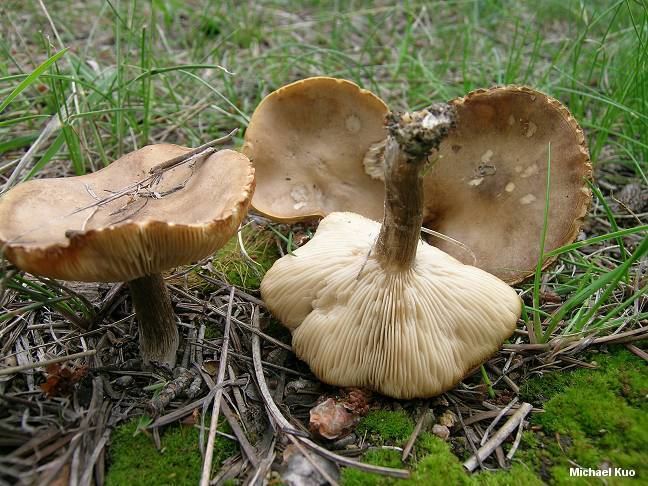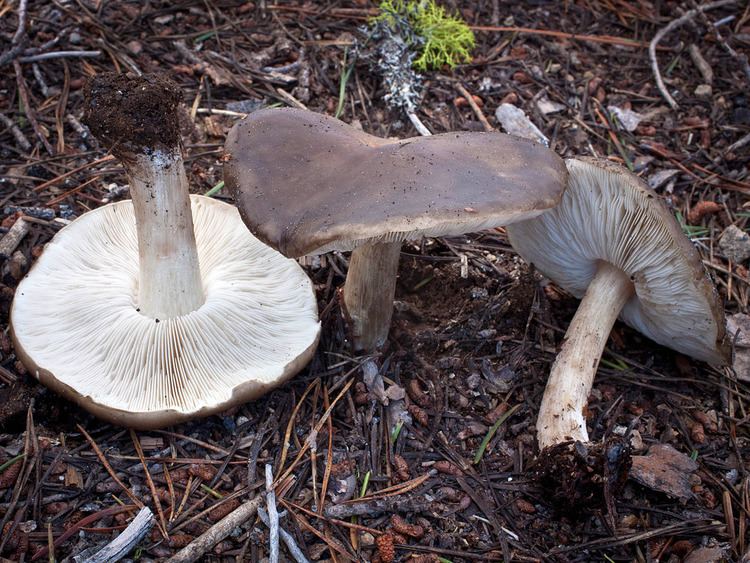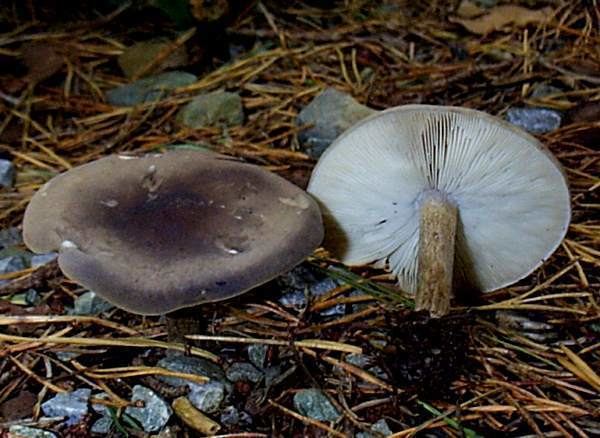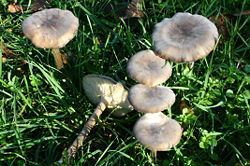Kingdom Fungi Order Agaricales | Division Basidiomycota Scientific name Melanoleuca Rank Genus | |
 | ||
Similar Lepista, Clitocybe, Marasmius, Tricholoma, Lyophyllum | ||
Melanoleuca fusca fungi kingdom
Melanoleuca is a poorly known genus of saprotrophic mushrooms traditionally classified in the family Tricholomataceae. Most are small to medium sized, white, brown, ocher or gray with a cylindrical to subcylindrical stipe and white to pale yellowish gills. The basidiospores are ellipsoid and ornamented with amyloid warts. Melanoleuca is considered a difficult group to study due to their macroscopic similarities among species and the need of a thorough microscopic analysis to separate species. DNA studies have determined that this genus is closely related to Amanita and Pluteus and that it does not belong to the family Tricholomataceae.
Contents
- Melanoleuca fusca fungi kingdom
- Melanoleuca graminicola fungi kingdom
- Etymology
- Macroscopic characters
- Microscopic characters
- Classification and phylogeny
- Habitat and Distribution
- Edibility
- Species
- Representative species
- References

Melanoleuca graminicola fungi kingdom
Etymology
The name of the genus is derived from the Ancient Greek melano- meaning "black", and leukos meaning "white".
Macroscopic characters

The fruit bodies of Melanoleuca are small to medium size (pileus 10–120 mm in diameter). The pileus is convex becoming depressed at the center, it is usually dry and white, brown, ocher, or grey. The gills are adnexed, sinuate, adnate, or subdecurrent, white to yellowish. The stipe is central, cylindrical or slightly swollen at the base, dry and longitudinally striate. Development gymnocarpic and stipitocarpic. Odor and taste usually indistinctive, mild, fungoid, sweet, or rancid. The spore print is white to pale yellowish.
Microscopic characters

The spores of Melanoleuca are 7.0–11.0 x 4.0–6.0 µm, thin-walled, ellipsoid, amyloid with ornamented warts. They look very similar to the spores of Leucopaxillus, however, Melanoleuca spores present a plage. Basidia are usually 4-spored, cylindrical to clavate. Pleurocystidia and cheilocystidia are present or absent, if present they are urticoid, thin-walled or fusiform to lageniform, thick-walled. They can have crystals incrusted at the apex. Cystidia are very important to separate species within this genus. Pileipellis is a trichoderm, sometimes a cutis. Hymenophoral trama parallel. Clamp connections are absent in all parts of the fruit body.
Classification and phylogeny

Phylogenetic studies based on molecular characters have shown that Melanoleuca does not belong to the Tricholomataceae. Moncalvo et al. presented a molecular phylogeny of the Agaricales based on LSU ribosomal RNA sequence data, including sequences of M. alboflavida and M. cognata. In this phylogeny Melanoleuca was clustered with Pluteus but with low bootstrap support. Matheny et al. performed a phylogenetic analysis of the Agaricales based on six-gene regions, including sequences of M. verrucipes. In this analysis Melanoleuca, Pluteus and Volvariella were recovered as a monophyletic group and closely related with the marine gasteromycete Limnoperdon. These three genera together with members of the Amanitaceae and Pleurotaceae conformed the Pluteoid clade. Garnica et al. and Binder et al. recovered a similar topology with Pluteus, Volvariella and Melanoleuca as a monophyletic group. Justo et al. performed a molecular phylogeny of the family Pluteaceae and found Melanoleuca to be the sister group to a clade composed of Pluteus and Volvopluteus. This clade was poorly supported in their analysis.
Habitat and Distribution

Melanoleuca species are saprotrophic; growing on soil in grasslands, deciduous and evergreen forests, and sand dunes. They are cosmopolitan, but mainly distributed in temperate regions. Few species are known from the tropics.
Edibility

Melanoleuca species are reported to be edible. The most common species that are consumed are M. alboflavida, M. cognata, M. evenosa, and M. melaleuca. Melanoleuca strictipes is reported to be slightly toxic.
Species
Murrill published the description of 119 species from North America, those species were revisited by Pfister who concluded that only six belong in Melanoleuca, while the rest belong to other genera as Clitocybe or Tricholoma. Singer considered 48 species worldwide, while Bon recognized 65 species from Europe. Kirk et al. consider about 50 species worldwide.
